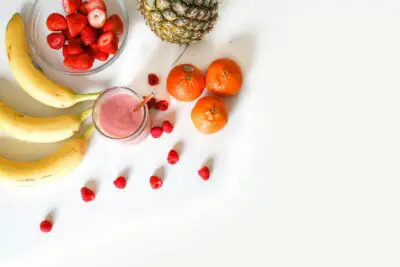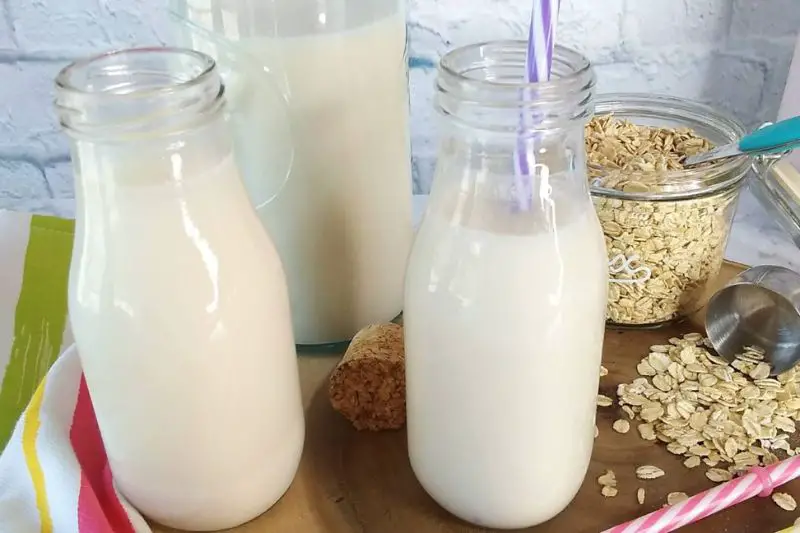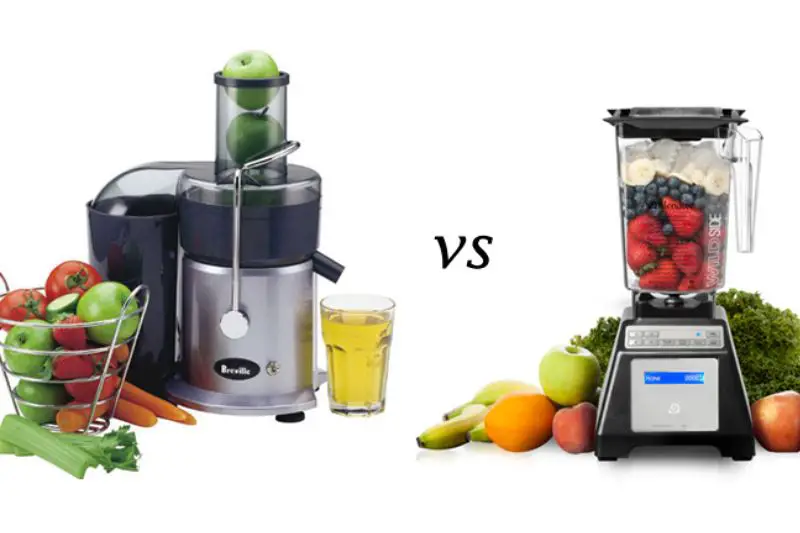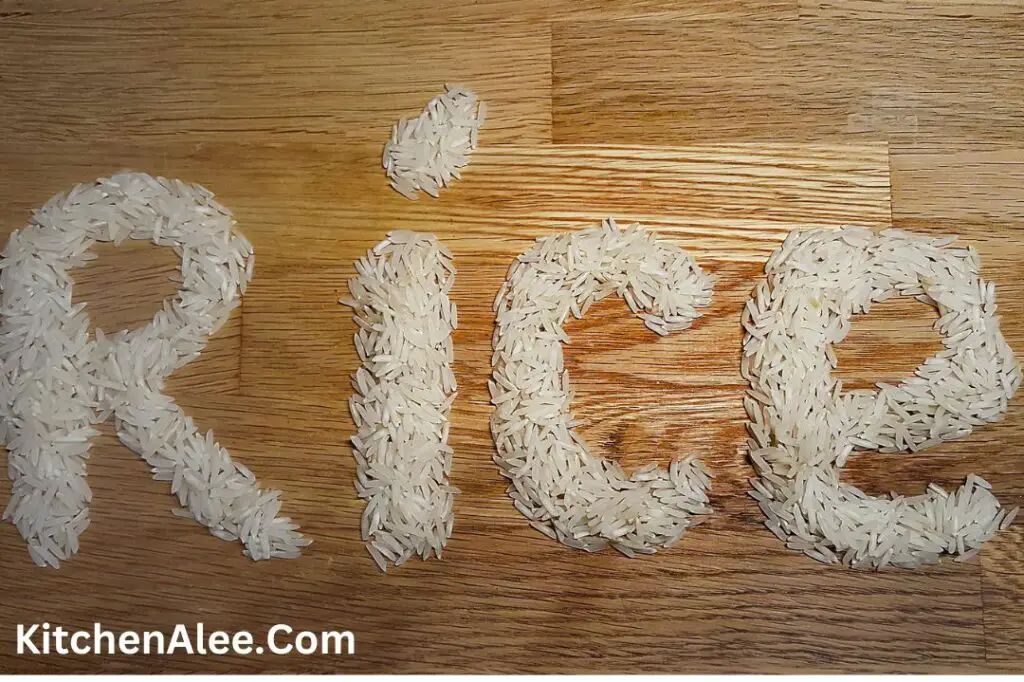Does Blending Fruit Make It Less Healthy? Blending fruit does not make it less healthy; in fact, it can actually be beneficial!
Due to the process of blending, there is a higher rate of bioavailability for certain vitamins and minerals contained within the fruit.
Blending also helps break down the dietary fibers and cell walls that are present in the fruit, allowing them to be more easily absorbed by the body.
Fruit is widely accepted as one of the healthiest foods available. Eating fruit is a great way to stay healthy and get the nutrients we need. But what happens when we blend our fruit? Does blending fruit make it less healthy?
This article will explore the effects of blending fruit on its nutritional value and flavor, and provide some tips for healthier blended fruit options.
We’ll also look at whether blending fruit can increase its sugar content, and how this could impact your overall health.
Is Blending Fruit Bad?
Blending fruit is not a bad proposition, as it can be seen as a viable means of improving dietary intake.
When fruits are blended, they retain much of their intrinsic nutrition, including essential vitamins and minerals, which increases the nutritional value of the combined product.
In addition, blending fruits can also help increase fiber intake since whole-fruits usually contain more fiber than if foods were consumed in their original form.
Does Blending Fruit Make It Less Healthy?
It is a misconception that blending fruit makes it less healthy.
Blending fruit in fact increases the availability of nutritive compounds found in the fruits, thus making them more accessible to digestive enzymes and allowing for more efficient absorption of essential vitamins and minerals.
This has been supported by numerous studies conducted on the effects of blending on nutrient composition and bioavailability.
Smoothies Are Not A Shortcut To A Healthy Diet:
Smoothies, like many other foods, can be a healthy part of a diet if they are made correctly and eaten in moderation.
Smoothies typically contain a high amount of sugar and unhealthy fats which can quickly add up on your calorie intake and contribute to weight gain.
Blending Fruit Contain A Lot Of Sugar And Calories:
Blending fruit increases the amount of sugar and calories in the final product, potentially leading to weight gain over time.
In either case, it’s important to be aware of what you’re putting into your body when you decide to blend fruits together.
Do Fruits Lose Their Nutrients When Blended?
It is generally accepted that nutrient loss of fruits occurs when they are blended; however, this is not the case.
Fruits and vegetables that are blended still retain their nutrients because most of the process involves cutting, chopping, and pulverizing, which does not impair the nutrient content.
Additionally, certain processes such as juicing and freezing can also lead to minimal nutrient loss due to a combination of factors such as oxidation and denaturation.
Starting Your Day With A Smoothie Might Be Healthy:
When it comes to starting your day, many people turn to smoothies as their go-to breakfast option.
Smoothies are typically made of frozen fruits and liquids, which can be high in sugar and calories.
When you blend these ingredients together, you create a thick and creamy drink that is often high in sugar.
Does Blending Fruit Destroy Fiber?
The notion that blending fruit destroys the beneficial dietary fiber content within it is a fallacy.
Blending simply breaks down the cell walls of the fruit, thereby making the fibers more accessible to digestion and absorption in our digestive tract.
The process of blending does not disrupt the inherent structure of the fibers or destroy their nutrient density.
In fact, some studies suggest that blending can actually increase bioavailability of certain nutrients, such as antioxidants found in fruits and vegetables.
Does Blending A Banana Make It Unhealthy?
No, blending a banana does not make it unhealthy. The process of blending breaks down the cell walls of the fruit, releasing the nutrients and making them more easily absorbed by the body.
This means that blending a banana can actually make it more nutritious and easier to digest.
Do Blended Bananas Have More Calories?
Yes, blended bananas have more calories than whole bananas. The reason for this is because when you blend a banana, you are essentially breaking down the cell walls of the fruit and releasing the sugars inside.
This makes it easier for your body to digest and absorb the calories in the banana, resulting in a higher calorie count.
Does Blending Fruit Make It More Fattening?
Some studies have shown that blending fruit can actually increase your caloric intake by up to 25%.
This means that if you’re trying to watch your weight, it might be a good idea to avoid blending fruits altogether.
Are Fruit Smoothies Unhealthy?
Fruit smoothies can be a nutritious and healthy part of one’s diet as they are composed of natural fruit sugars and contain numerous beneficial vitamins, minerals, and antioxidants.
Furthermore, they are high in dietary fiber and low in calories, making them an excellent choice for people looking to maintain or lose weight.
Additionally, smoothies can be fortified with additional beneficial ingredients such as protein powder or flax seeds to boost their nutritional value even further.
Does Fruit Lose Its Nutritional Value When It’s Blended?
The nutritional value of fruit remains largely unaffected when it is blended.
This is because the blending process does not significantly alter the chemical composition of the fruit, meaning that most of its nutrients and vitamins remain intact.
However, it should be noted that some minor changes to the nutritional value may occur due to oxidation processes, which can cause a slight decrease in certain vitamin and mineral levels.
Additionally, it is possible that some nutrient loss may occur during the blending process itself if not done properly.
Conclusion: Does Blending Fruit Make It Less Healthy?
Blending fruit makes it less healthy? According to some experts, blending fruits can actually decrease the amount of nutrients that are available to the body.
When making smoothies, use fresh ingredients and avoid using processed foods.
By following these simple steps, you’ll be able to make delicious, healthy blended fruit smoothies that will fuel your body with nutrients and vitamins for energy and endurance.
FAQs
Is It Better To Eat Fruit Blended Or Whole?
There’s no wrong answer when it comes to blending fruit! You can either blend the fruit into a drink or eat it as is.
Some people prefer to blend the fruit because it makes the smoothie less sweet and more refreshing tasting. e.
Is Drinking Smoothies The Same As Eating Fruit?
Although smoothies are made of fruit, they are not the same as eating fruit.
Drinking smoothies can provide you with many of the same health benefits as eating fruit, but they don’t contain all of the fiber and other nutrients that are found in whole fruits.
Is It Better To Juice Or Blend?
Ultimately, the most important thing is to eat fresh produce as often as possible to get all of the nutrients and antioxidants that are beneficial for your health.
Does Blending Fruit Increase Calories?
Some people believe that the added liquid dilutes the nutrients and makes it a less healthy option, while others argue that blending can actually add moisture and make the fruit more nutritious.




